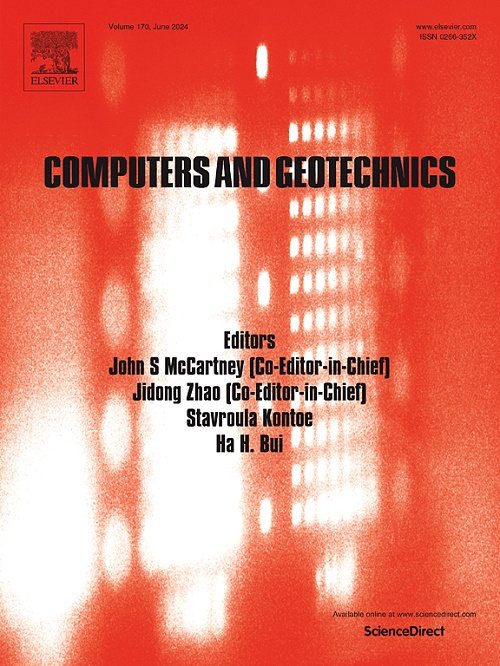Submarine slope failure in sensitive clay due to buoyancy force of trapped gas
IF 5.3
1区 工程技术
Q1 COMPUTER SCIENCE, INTERDISCIPLINARY APPLICATIONS
引用次数: 0
Abstract
Submarine landslides pose significant threats to coastal communities and offshore infrastructures. Free gas is regarded as a key triggering or pre-conditioning factor for slope failure. Slope instability caused by reduction of the shear strength due to the presence of gas has been investigated widely. An alternative trigger is the buoyancy force of trapped gas within the gas structure, as observed in both in-situ investigations and model tests. In this study, typical simplified initiation scenarios are investigated under plane strain conditions through finite element analyses, where the trapped gas within a gas structure is simplified as a pressure applied to the adjacent soils and increased to trigger slope failures in sensitive clay. Punching shear failures in the overlying layer and catastrophic landslides are identified under different soil conditions. The latter is attributed to the strength degradation induced by the tensile failure under buoyancy force. Empirical criteria for these two failure patterns are proposed. The proposed criteria are then validated to be applicable to three-dimensional conditions, providing a conservative assessment. A case study of the landslide offshore the northern Svalbard margin is conducted using the criteria proposed, finding that the safety factor of slope may be reduced significantly due to the buoyancy force within the gas structure.
求助全文
约1分钟内获得全文
求助全文
来源期刊

Computers and Geotechnics
地学-地球科学综合
CiteScore
9.10
自引率
15.10%
发文量
438
审稿时长
45 days
期刊介绍:
The use of computers is firmly established in geotechnical engineering and continues to grow rapidly in both engineering practice and academe. The development of advanced numerical techniques and constitutive modeling, in conjunction with rapid developments in computer hardware, enables problems to be tackled that were unthinkable even a few years ago. Computers and Geotechnics provides an up-to-date reference for engineers and researchers engaged in computer aided analysis and research in geotechnical engineering. The journal is intended for an expeditious dissemination of advanced computer applications across a broad range of geotechnical topics. Contributions on advances in numerical algorithms, computer implementation of new constitutive models and probabilistic methods are especially encouraged.
 求助内容:
求助内容: 应助结果提醒方式:
应助结果提醒方式:


